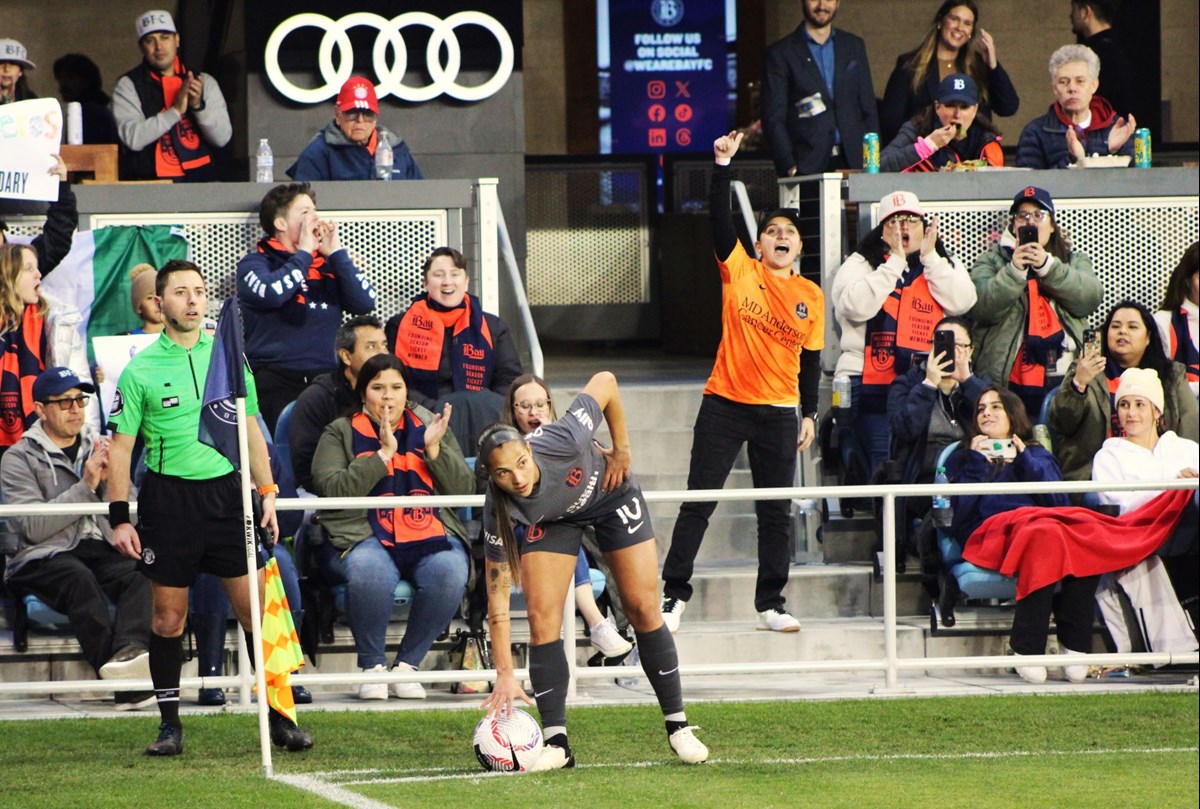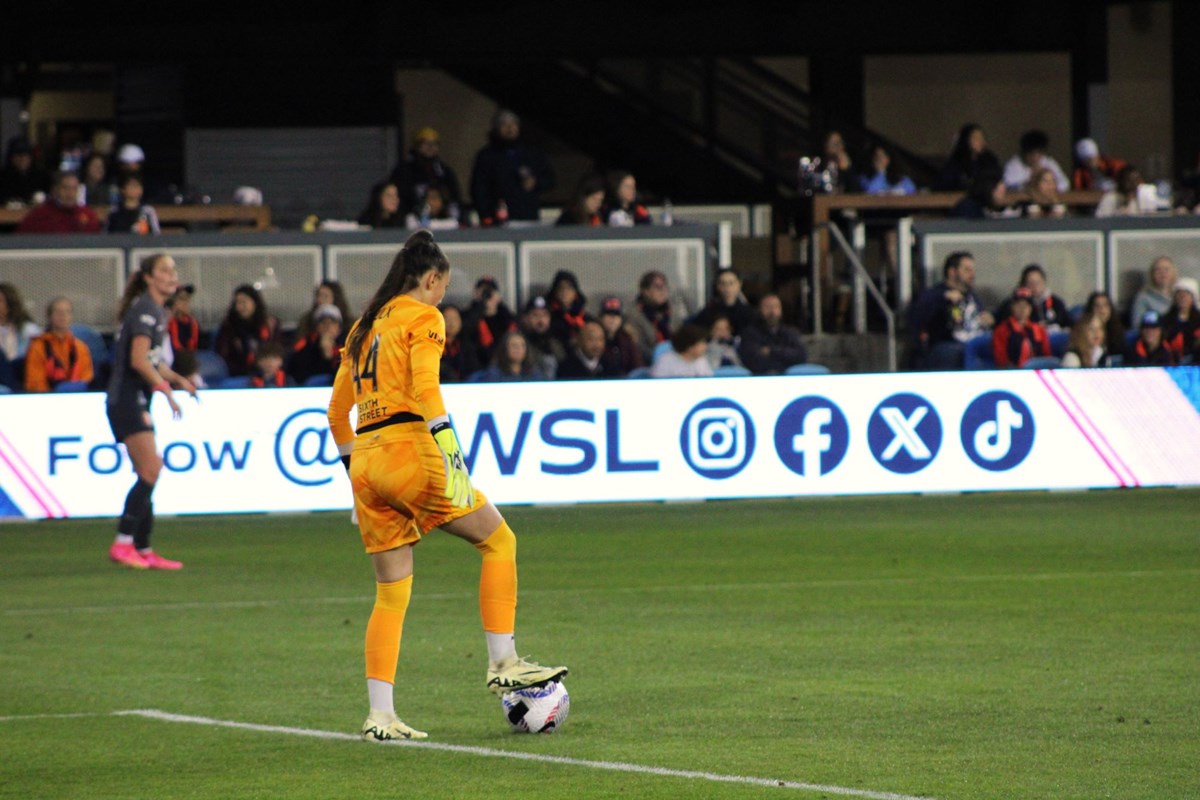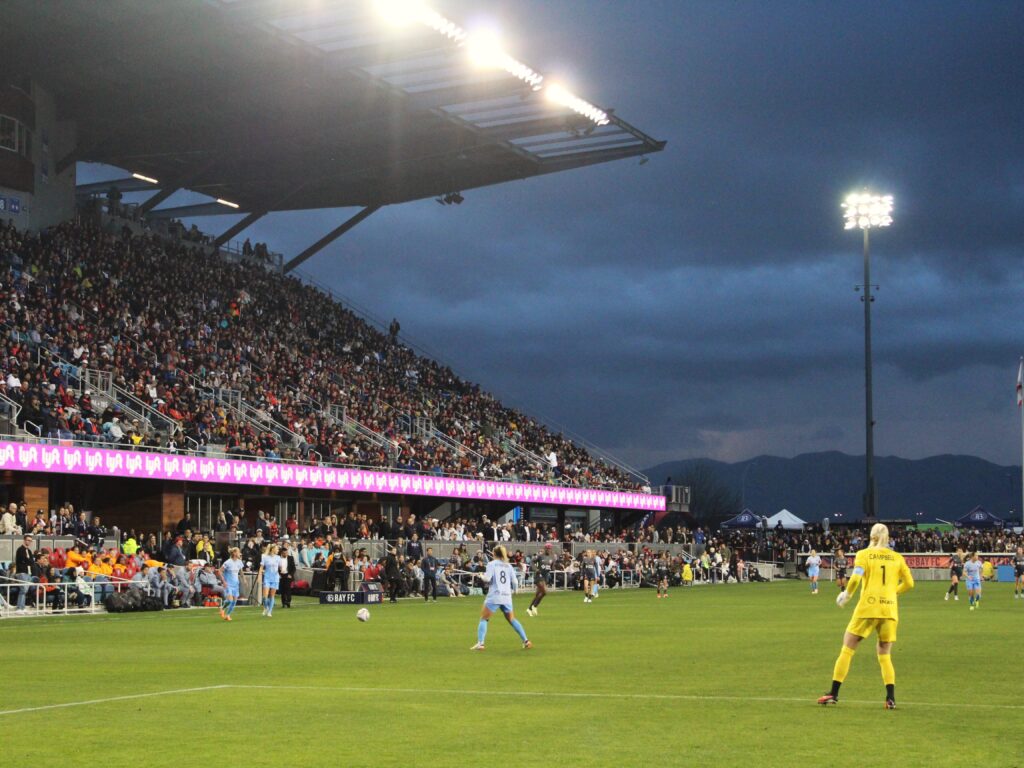It was Bay FC's first home game to a sold-out crowd, and the team was already making history.
A Bay FC spokesperson said the March 30 game filled the stands with approximately 18,000 fans, the largest crowd for a professional women's sports event in the Bay Area. The previous record, dating back to 2001, was held by the San Jose Cyber Rays, a women's professional soccer team that drew 16,174 people to a single game, a spokesperson said.
But making history is somewhat normal in women's soccer these days. In recent years, the National Women's Soccer League has reported record attendance numbers each year. This support has allowed the league to add more franchises like Bay FC.
For Bay FC midfielder Joel Anderson, it's a surreal reality. She grew up in the Bay, a short drive from San Jose State University's training facility, and currently practices with the team there.
“My house where I grew up is 10 minutes down the road,” she said before practice in March. “Even when I'm driving to practice, I feel like, wow, I'm familiar with everything around me. It just feels like home, you know? It's so good to be on this team.”
Anderson grew up watching the San Jose Earthquakes, the area's professional men's soccer team. She started playing soccer as a child and she always dreamed of becoming a professional, but knew it would be difficult.
She had role models in the sport like Mia Hamm and Abby Wambach, but she also believed that opportunities were limited for athletes like her. The San Jose Cyber Rays and FC Gold Pride, two women's professional soccer teams that once existed in the Bay Area, went out of business just a few years after they were founded. Even finding a TV channel streaming women's soccer matches can be difficult.
“I can't even imagine how those young girls must be feeling right now to be able to come to our game and just see that packed stadium,” Anderson said. “I would have been overjoyed if there was a professional team near my home.”
find the right direction
It's been a long road for American women's soccer to get to this point. There was a women's professional soccer league that closed in 2012 before the NWSL started its first season in 2013. Before that, there was the short-lived Women's United Soccer Association in the early 2000s.
“There have been ups and downs with the league and its growth. It's never been linear,” said Molly Pollett, UCLA women's soccer assistant coach. “But now we feel like we're finally at a point where things are moving in the right direction, from resources to fans to media, and that's really exciting.”
Pollett has worked as a coach at the collegiate level for more than a decade. When she began her career, she said it was much harder for women in the United States to become professional if they wanted to remain in the country.
“Especially when the league was over, it was like if I wanted to play professionally, I had to go overseas,” she said. “And now against the NWSL…they are claiming: [staying] House. ”
 Bay FC midfielder Deina Castellanos during the team's first home game at PayPal Park on March 30 in San Jose. She scored the first goal in this match.Manola Sekaira/CapRadio
Bay FC midfielder Deina Castellanos during the team's first home game at PayPal Park on March 30 in San Jose. She scored the first goal in this match.Manola Sekaira/CapRadio
Bay FC goalie and UCLA graduate Caitlin Rowland has experienced those ups and downs up close. She was a college student when the Women's Professional Soccer League, the predecessor to the NWSL, ended. Until that moment, her life revolved around becoming a professional.
“Actually, when I got out of college and tried to play after that, I wasn't sure if the league even existed,” Roland said. “It was definitely scary.”
So when the NWSL rose from the ashes of the previous league, Roland gave it his all. She said she was willing to go anywhere to make that happen. She still remembers being drafted by the Kansas City team in 2015.
“I remember one morning I woke up, it was like 6 a.m., and I was listening to this stream on my computer, and it was like it was skipping in and out,” Roland said. “My ears were on the computer speakers and I thought they called my name. And then I got a call right away from the head coach in Kansas City telling me they drafted me. I knew.”
A lot has changed in the sport since then. Over the years, she has seen her league grow significantly as she transferred from the Kansas City team and played for various other teams.
“The draft has been heavily covered on CBS Sports lately,” she said. “It’s a great piece of work and I think it speaks to how far the league has come.”
And there's the crowd. When Roland started her career, she said she felt lucky to see hundreds of people participating.
“Right now, a lot of stadiums are approaching full capacity every game, which is crazy,” she said.
From here, only the top
After years of playing professionally, Rowland said women's soccer is finally starting to get the recognition it deserves.
“I feel like if I look back in 10 years, I won’t even recognize the league we have now,” she said. “We are making huge leaps forward every year.”
 Bay FC goaltender Lisianne Proulx during the team's first home game on March 30 at Paypal Park in San Jose.Manola Sekaira/CapRadio
Bay FC goaltender Lisianne Proulx during the team's first home game on March 30 at Paypal Park in San Jose.Manola Sekaira/CapRadio
As of this year, there are 14 women's professional soccer teams in the United States, and the NWSL has pledged to establish two more by 2026. Compare that to men's Major League Soccer, which has a total of 26 teams in the United States, and the room is clear. grow up. And now, that growth looks possible as each team finally has the support they've been seeking for years.
Pollet said he expects the league to continue its steady growth. A number of important changes have already taken place, including players being able to actually earn a living doing their jobs.
“It's very exciting to know that this is a possibility. [players] You might be able to make a career out of it,” Poletto said. “What I'm trying to say is that you might be encouraged to go pro at an early stage, but you have to work multiple jobs to become a player because the salary wasn't livable. .”
Anderson said she has also noticed an increase in public awareness of the NWSL's existence and respect for the sport.
“I've seen the fan base for women's soccer grow tremendously in the United States,” Anderson said. “If you asked people a few years ago what the NWSL is, they were like, 'What is that?'” So more and more people are talking about women's soccer and what we're doing here. I definitely think they're starting to realize that, and I think they're realizing that we're growing something special. ”
Bay FC's role in women's soccer history is just beginning. Although they lost their first home game to the Houston Dash, they won their next home game in mid-April. They are scheduled to play several games in May at San Jose's home stadium, PayPal Park. The season continues until November.

